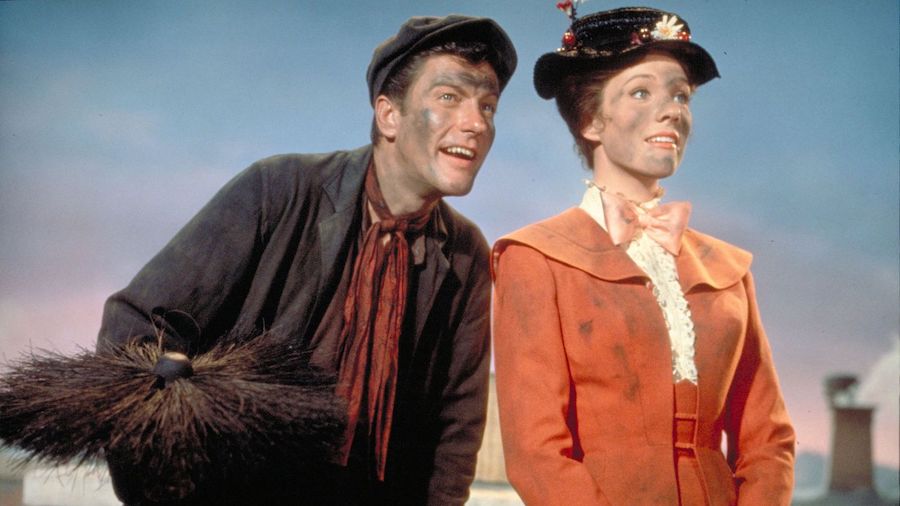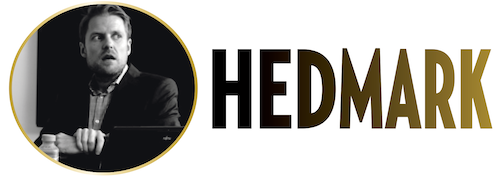
IT’S SUPERCALIFRAGILISTICEXPIALIDOCIOUS!

The story of how Walt Disney convinced the British-Australian author P.L. Travers to let him turn her books about Mary Poppins into a live-action film was amusingly told in Saving Mr. Banks (2013). Why it took him decades to convince her is no mystery – when he first talked to her about it he had mostly animated shorts to show for himself. She didn’t want her nanny turned into a Donald Duck cartoon.
Travers had complaints about this production, but there’s no doubt that it was Disney’s most successful live-action feature to date, earning 13 Oscar nominations.
Answering an ad that was never published
London, 1910. The Banks family is going through a tumultuous period. Winifred (Glynis Johns) is committed to the suffragette movement while also trying to run the household. The children, Michael and Jane (Matthew Garber, Karen Dotrice), keep running away. The man of the house, banker George Banks (David Tomlinson), wants order. When a new nanny needs to be hired, Mary Poppins (Julie Andrews) shows up at the door, answering an ad that was never published. George is utterly confused but Poppins sort of hires herself. The children wanted someone kind, and their new nanny lives up to that demand… but she is also very strict. Oh, and magical. Michael and Jane are in for a life-changing experience.
Shot on a soundstage in California
The film that became not only Andrews’s debut but her major breakthrough is an immensely satisfying and charming fantasy musical. Shot on a soundstage in California, the film has a cast of largely British actors but never really try to make us believe that we’re in Edwardian London. Instead, the filmmakers make a point out of the story’s fantastical atmosphere, presenting painted, romantic backgrounds of the city. Several sequences take place in an alternate dimension where Mary Poppins and the children go; those scenes have the cast interacting with each other in entirely animated environs, as was memorably done in Song of the South (1946). The look of that is pure Disney, sharing the style of its animated features.
”Supercalifragilisticexpialidocious” is an insane musical explosion, one of the film’s highlights
The character of Mary Poppins and the nun in The Sound of Music (1965) shaped audiences’ perception of Andrews; she’s absolutely lovable and her impressive singing carries many of the songs. The Sherman brothers, who were inspired by the Edwardian music-hall genre, outdid themselves. ”Supercalifragilisticexpialidocious” is an insane musical explosion, one of the film’s highlights; the lengthy ”Step in Time” sequence in the film’s second half becomes more of a headache. The cast is excellent, including Tomlinson as the most English Englishman you can imagine. An American colleague of his, Dick Van Dyke, does an awful cockney accent, but no one has ever really cared; his Bert cheerfully joins each one of Mary Poppins’s magical outings, finding a new appearance for each scene (a clever way of incorporating several of the books’ characters into one).
Young Garber and Dotrice are cute as the kids who want to break out of their tightly controlled Edwardian lives; the film also finds nice parts for several veterans, including Jane Darwell in her last role as the woman feeding the birds.
Mary Poppins is dominated by its conflict between well-meaning, stifling conservatism and freewheeling liberty, symbolized also by the women’s rights movement briefly seen in the film. P.L. Travers may not have liked everything about the adaptation (”I’ve learned to live with it”, she said in a 1977 interview), but there’s no need to be embarrassed.
Mary Poppins 1964-U.S. 140 min. Color. Produced by Walt Disney. Directed by Robert Stevenson. Screenplay: Bill Walsh, Don DaGradi. Books: P.L. Travers. Cinematography: Edward Colman. Songs: Robert B. Sherman, Richard M. Sherman (”Supercalifragilisticexpialidocious”, ”A Spoonful of Sugar”, ”Chim-Chim-Cheree”, ”Let’s Go Fly a Kite”). Editing: Cotton Warburton. Cast: Julie Andrews (Mary Poppins), Dick Van Dyke (Bert/Mr. Dawes, Sr.), David Tomlinson (George Banks), Glynis Johns, Ed Wynn, Hermione Baddeley… Elsa Lanchester, Reginald Owen, Jane Darwell.
Trivia: Tomlinson also does the voice of Poppins’s parrot umbrella and several animated characters. Angela Lansbury and Bette Davis were considered for the part of Poppins; Cary Grant as Bert. Followed by Mary Poppins Returns (2018). Later a stage musical.
Oscars: Best Actress (Andrews), Film Editing, Original Score, Original Song (”Chim-Chim-Cheree”), Special Visual Effects. Golden Globe: Best Actress (Andrews).
Last word: “I’d just given birth to my daughter Emma literally the day before. And the following morning my phone rang in the hospital, and the voice said, [Andrews croaks], ‘Hello?’ I said, ‘Who is this?’ She says ‘P.L. Travers.’ I almost sat up in bed. I said, ‘Oh, Miss Travers, how sweet of you to call!’ She said, ‘Yes. Well, I understand you’re going to be playing the part of Mary Poppins.’ I said yes, as I understand it. And she said, ‘Well, talk to me!’ I said, ‘Well I’m feeling a bit woozy right now. I just had a baby yesterday.’ [Travers’ response?] ‘Well. You’re far too pretty, of course. But you’ve got the nose for it.'” (Andrews, USA Today)
